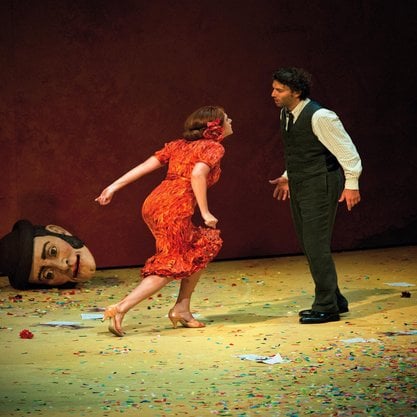Article
Zangirimono [Cropped-hair Plays] By Wetmore, Kevin
Article
In Meiji-era Japan, as part of the reforms to kabuki in response to modernization, playwright Kawatake Mokuami (1816–1893) and actor Onoe Kikugorō V (1844–1903) developed a new genre of kabuki that focused on presenting both external Western elements and contemporary dramatic narratives onstage in the kabuki style.
In the late 1870s, seeking contemporary pieces that would meet government-dictated reforms within kabuki, Onoe Kikugorō V (1844–1903) asked Mokuami to write modern kabuki plays for him to perform in. The result was “cropped-hair plays” [zangirimono]. As the reforms of the Meiji period took hold, an obsession with the surface elements of Western culture and modernity took hold over the middle and upper classes. The social elite rejected the traditional garments and hairstyles of the samurai, which were perceived as premodern. Kimonos were discarded in favor of Western suits. Swords were no longer worn. Bowler hats, pocket Watches, rickshaws, newspapers, and canes grew in popularity, and topknots (chonmage, the hairstyle of the samurai) were cut off, resulting in “cropped-hair plays”: dramas that featured modern office workers and government officials without topknots in contemporary settings.


![Aoki, Shigeru [青木繁] (1882–1911)](/propagator/data/img-dc/original/image/visual-arts-hero/180_converted.jpg)